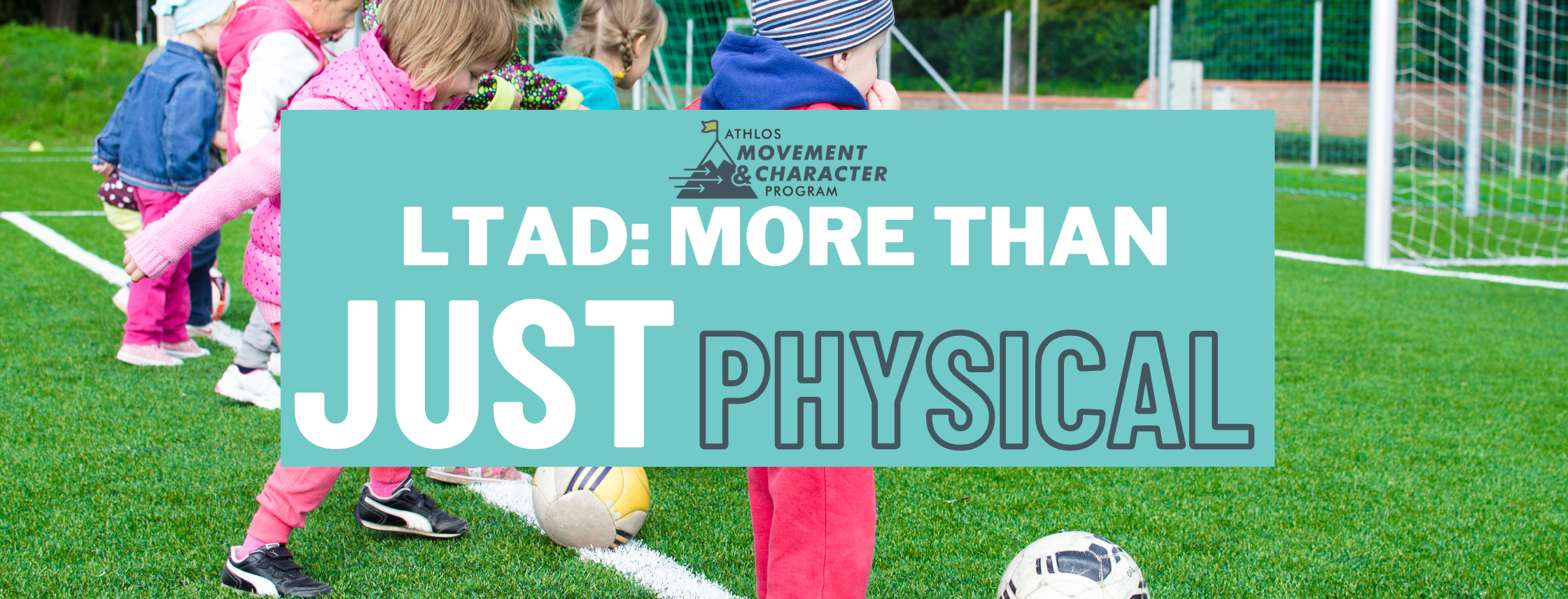Long-Term Athlete Development. Long-Term Athletic Development. Long-Term Development. Whatever your stance on the “A” in LTAD is, you’ve likely heard, seen, and are probably a decent proponent of LTAD. We’ve all seen the hashtags along with videos of athletes in the weight room, in a park, or even in a living room. Each video touting what the folks posting the video deem as quality development with that athlete.
The LTAD label is thrown around by S&C coaches, sport coaches, PE teachers, national governing bodies (NGBs), etc. Even the United States Olympic and Paralympic Committee uses LTAD concepts in their American Development Model. I’ll confess, I too use the #ltad on our AMAC Twitter account @AthlosMAC and even my personal account @THEschmike. I’ll be the first to say that I am a LTAD believer and a huge fan of the concepts, reasoning, and foundations of this framework. And I think much of what we see, hear, and read is pretty decent content.
However, I’m often hesitant to believe that every practitioner posting these things actually know what LTAD is and why what they are doing “is” LTAD. I love a good video of high school soccer players doing somersaults and definitely appreciate a solid obstacle course. But I wager that if I asked the dreaded question “why” I would get a million different reasons, almost all of which would be focused on the physical aspects and/or development of the athletes, and many of which wouldn’t be all that accurate to begin with.
To be honest, I can’t say I blame them, and I’m certainly not mad. I just firmly believe that, generally speaking, as professionals (coaches, S&C, PE, and anything in between) we don’t all know enough why we claim something fits with the LTAD framework. With that said, a huge sticking point when it comes to LTAD is the basic understanding (or lack thereof) WHY the LTAD framework is laid out the way it is. Meaning, why do we or should we program and plan for specific activities/movements?
To get us started on answering this question, we need to understand what LTAD is and where it came from. This is typically the part of the article where you’d expect me to go into the history of LTAD. Fortunately for me, Joe Eisemann PhD (Twitter: @Joe_Eisenmann), Head of Strength & Conditioning at IMG Academy has already written a fantastic article digging into just that! Check it out HERE!

Instead, my aim is to give a brief summation of the NON-physical components of LTAD and how they shape the framework and ultimately help people to understand that LTAD is MORE than just the physical. We all know and understand that youth development is non-linear. However, much of the time we view this in terms of physical development. Whether its height, weight, balance, speed, catching, kicking, or any other physical trait OR ability, most people view their LTAD programming through this lens. Thinking sole about an athlete physically being “able to” or “ready for” a specific movement pattern, lift, or activity.
The truth of the matter is, some kids may be physically ready but intellectually, emotionally, and/or morally not even close. The LTAD model, the stages within it, and the reasoning for the “ideal” training/practice was built with not only the physical development of a child in mind, but their intellectual, emotional, AND moral development as well.
Intellectually, LTAD looks mostly at the work of Jean Piaget who outlines 4 primary stages of intellectual development in children. In a nutshell, Piaget lays out and discusses how children go from taking in a whole new world with all their senses, to realizing object permanence, and eventually to using language to communicate. Children progress from an inability to think logically to deductive reasoning and abstract thinking.
Emotionally, the work of Erik Homburger Erikson and his 8 stages of emotional development are used as guidance in the LTAD framework. Erikson’s stages include (chronologically): hope, will, purpose, competence, fidelity, love, caring, and wisdom. Within each of those stages he goes into detail about how proper teaching/coaching/parenting effects aspects of young people such as trust, autonomy, shame, initiative, identity, and more.
Morally, the LTAD framework looks at Lawrence Kohlberg’s work with the 3 stages of moral development. Each stage includes 2 substages discussing the progression from being punishment oriented, to focusing on self-interest, to conformity, and all the way up to maintaining social order and beyond.

Obviously the above is just the 10,000-foot view of each of these aspects and we could certainly spend a great deal of time about each of them. Regardless, even with these tiny summaries, we hopefully realize that maybe an athlete struggling to complete a complex task has nothing to do with physical ability but their inability to conceptualize what is being asked of them. Or why a child is physically capable of competing in an activity but doesn’t have the emotional capacity to.
Each of these components plays role in what is age/stage appropriate for children. As coaches, teachers, and parents we can’t rely solely on what a child is physically capable of. It is imperative to keep the aforementioned in mind when programming for athletes to ensure safe, effective, and FUN environments for that athlete and their peers.
Here on the AMAC team, we are proud to have been very cognizant and intentional when designing the program that keeps in mind not just the physical development of the child but the intellectual, emotional, and moral development as well! I encourage you to check out what it looks like for us!
References:
- Long-Term Athlete Development (I. Balyi, R. Way, C. Higgs)
- Developmental Physical Educaiton for Today’s Children (D. Gallahue)
- Essentials of Youth Fitness (A. Faigenbaum, R. Lloyd, J. Oliver)

